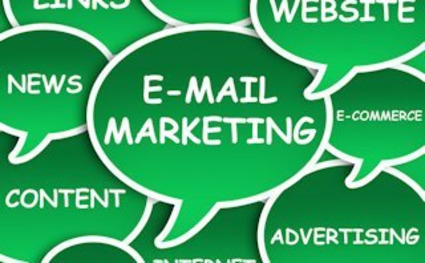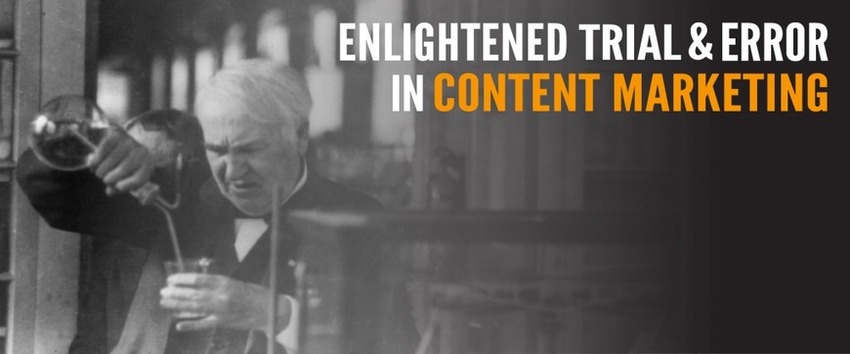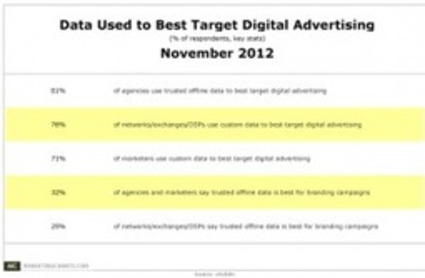Get Started for FREE
Sign up with Facebook Sign up with X
I don't have a Facebook or a X account


 Your new post is loading... Your new post is loading...
Wireframe.cc A minimal online tool that provides allows you to rapidly mock up page layouts, and which requires no registration to use it, or to save your work. You can choose from mobile and desktop templates.
Moqups An impressively powerful HTML5 app with plenty of common web elements that you can make use of when designing your pages. Easy to use, with desktop, mobile and tablet templates.
FlairBuilder FlairBuilder is a desktop app for creating interactive wireframes, which allows teams / clients to play with the prototypes. Includes more than 70 drag and drop components and widgets.
Fluid UI A lovely tool with lots of features for creating mobile app prototypes. Provides a canvas to see the big picture, as well as the page-level detail. Dive straight in, no immediate registration required.
Google Drawings Morten Just has made a bunch of stencils for Google Drawings, to help people use it for wireframing.
HotGloo A paid-for tool (with a limited access free option) that should be of interest to UX professionals. Includes the usual drag and drop functionality, alongside a comprehensive library of user interface elements. It also allows you to show different content states (for example, to show what a logged in user would see vs a new visitor).
Wirify This one flips wireframing on its head, by giving you the option to turn existing web pages into wireframes in just one click.
iPhone Mockup Allows multiple users to work on wireframes for iPhone apps. Changes are rendered in real-time.
iMockups An iPad app for wireframing “on the go”.
ASCII Flow You want lo-fi? You got it… 
Yu PANG's curator insight,
November 16, 2016 12:25 PM
10 new #wireframing tools to help you create rapid prototypes
Almost all of the CMO’s and Marketing leaders are still struggling with Social. Everyone knows it’s important, they know they need to engage with it, yet they are still trying to answer fundamental questions that are relevant to any Marketing activity: 1) How do I engage and use social media to benefit my brand and drive sales? 2) How do I measure social media and the impact it’s having on my brand—positive or otherwise?
These are challenging questions that almost all Marketers, no matter their sophistication, are struggling with. The question is, why?: http://www.brandingstrategyinsider.com/2012/11/social-media-strategy-for-todays-cmo.html
From
article
-
November 9, 2012 6:20 PM
It is difficult to prove social media’s worth in numbers or its value to other areas in a company. Because of this, many marketers may be missing key points that can both save time and help in getting the coveted budget increase.
Error #1. Thinking your CFO is your nemesis Connect social media to metrics that are important to business objectives, such as sales volume, revenue and cost.
Error #2. Single-use content Repurposing and reformatting existing content is the absolute top tactic for developing B2B marketing content.
Error #3. Creating content that is not authentic A social media audience will appreciate transparency, and understanding the true tone of your company will produce a voice that really resonates.
Error # 4. Treating social media like it’s "special" Too often, marketers miss areas where social media is performing well, such as conversion rates or cost for leads, because they are not comparing them to other areas.
Error #5. Not soliciting outside content Outside content is a great way to round out all of your needs, and get the engagement you’re looking for, without compromising your team or content.
Email Marketing Increases PPC & SEO Conversion
With the costs of pay-per-click (PPC) advertising and search engine optimization (SEO) efforts rising, the emphasis of a small business online marketing campaign will increasingly turn to conversion. This can be a bit confusing. If SEO or PPC generates an initial small business lead, but it is one of the 73 percent that isn’t sales-ready, the lead must then be nurtured after the first point of contact.
Email is the most effective nurturing mechanism by far. When a subsequent email, maybe the third or fourth in a nurturing series, brings the prospect back to purchase – is that conversion due to email? Regardless of how the lead is categorized, small business should use an integrated marketing dashboard so they can measure this complex marketing behavior and understand it.
Today’s approaches to marketing and measurement are giving marketers tunnel vision. All they see are leads.Here are the issues that may be blinding you today.
1. Focusing on Linear Results Measurement Marketing measurement starts when a contact is captured and continues as contacts move into and through the sales pipeline. Any marketing that does not directly deliver contacts or move contacts through the purchase process in an observable way is not valued in this environment.
Holistic measurement is hard and it can be expensive. But if you don’t embrace it you will miss these opportunities.
2. Using Marketing Automation for Demand Creation Marketing automation has significantly improved your ability to educate and create demand within an identified and receptive audience.
However, marketing automation works with identified audiences only and can completely miss today’s self-directed buyer.
If pipeline and revenue fall short, marketers turn to lead generation to feed the marketing automation machine and in doing so you may completely miss the real issues causing the shortfall.
Read more at http://www.business2community.com/b2b-perspective/b2b-marketing-has-a-perception-problem-0324538#FCFiQRCBD92TjEfo.99
Failure to Update Automated Emails Each of these emails needs to have the design and the content updated. It’s easy to let the automated emails go for months or even years without making any updates.
Lack of Email List Cleaning A second item that gets forgotten with email marketing is list cleaning. There are manual changes that need to be made or at least setup to happen from time to time. The first change that needs to happen is to clean off the list of undeliverable emails. These are email addresses that the system is no longer able to reach. ISPs will track the number of times you try to send messages to these addresses and if that number adds up you could get in trouble. Second, some people will click the spam button on you instead of the unsubscribe option. Maybe the person didn’t see the unsubscribe link in your email or maybe they were just in a bad mood. Make sure they are removed from the list (if your ESP doesn’t do this automatically).
Inability to Update Software and Services The world is always changing, but we tend to get used to the way things are and often we don’t realize what we’re missing by not going through an update. Now, email partners should be on top of providing updates to the email system, but because processes can get automated it’s easy to forget about updates. Setup a schedule in your marketing department to analyze the software and services you’re using.
Adding signals (columns) allows you to do two things: First, it can reveal new relationships, enabling new inferences — with a new variable, you may see a correlation in the data you never realized before. Second, adding signals makes your inferences less subject to bias in any number of individual signals. You add cases, keeping the same signals, to make your understanding of those variables better. In contrast, you add signals to make it possible to overcome errors in other signals you rely on.
Although much of the discussion of big data has focused on adding cases, — in fact, the common perception of "big data" is being able to track lots of transactions — but adding signals is most likely to transform a business. The more signals you have, the more new knowledge you can create. For example, Google uses hundreds of signals to rank web pages.
Exactly what that team of dozens of data crunchers was doing, however, was a closely held secret. “They are our nuclear codes,” campaign spokesman Ben LaBolt would say when asked about the efforts. Around the office, data-mining experiments were given mysterious code names such as Narwhal and Dreamcatcher. The team even worked at a remove from the rest of the campaign staff, setting up shop in a windowless room at the north end of the vast headquarters office. The “scientists” created regular briefings on their work for the President and top aides in the White House’s Roosevelt Room, but public details were in short supply as the campaign guarded what it believed to be its biggest institutional advantage over Mitt Romney’s campaign: its data.
And here’s IDEO’s innovation cheat sheet… in five simple steps:
1. Understand the market, the client, the technology, any constraints that are perceived for the problem at hand. Content marketers need to do market research into who their audience and prospects will be in order to make an educated guess at a starting point. 2. Observe real people, in real life situations, using real language to find out what makes them tick. Once you start putting content out there and growing a small, loyal audience, you can tune in to their fears, hopes and desires to help steer your course. 3. Visualize ground-breaking concepts and the customers who’ll use them. A brainstorm-intensive process that imagines the customer experience. By really discovering what makes your prospects tick, you can speak to their needs. 4. Evaluate and refine to create quick, iterative prototypes that build on each other incrementally with the understanding that “no idea is so good it can’t be improved.” You must learn from your mistakes and optimize the cornerstone content that will work to forward your efforts. 5. Implement the new concept for commercialization and business. The longest and most technically challenging phase. For content marketing this is what Seth Godin refers to as being prepared to “get rich slow.” Successful online marketers take the time to earn attention, build trust and turn it into a profit.
“Start with an educated guess for your content strategy.”
Marketing automation provides you with some great data about visitors to your site including their industry, position and interest level. Where this analysis ends, observation and common sense begin.
“Create and release content knowing it’s likely to be a bit flawed.”
You don’t have to be the ultimate expert on a topic to talk about it in a blog post. Content marketing isn’t just about establishing thought leadership, it can also be about starting a conversation. Use outside articles as a jumping off point, introduce a few ideas of your own, and ask for feedback from readers. Starting a dialogue can be a really valuable way to learn more about your audience.
“Optimize [content] constantly based on audience feedback.”
Crank out content, analyze results, adjust, repeat. This kind of agility is the very core of what marketing automation is all about. Don’t get discouraged if reports reveal that a piece of content received little to no engagement — that’s an insight that you didn’t have before, and it could potentially save you from investing hours and hours on a piece of long form content that won’t perform well.
The MIT Center for Digital Business and Capgemini Consulting set out to investigate the ways in which large traditional companies around the world are managing – and benefiting from — digital transformation. They are working to understand how digital technology is changing the business of large companies.
What technologies spur digital transformation? The authors of the MIT Center for Digital Business/Capgemini report identify four emerging technologies companies can use to completely rework their customer interaction, their operations and their business models:
social media; analytics; mobility; embedded devices, or smart RFID tags.
While core functionality of email distribution and landing page generation is high, use of more “sophisticated” marketing automation functionality, particularly lead scoring and nurturing, drops off considerably for all companies
Best-in-Class companies are more likely to utilize these more sophisticated functionalities.
In other words, Best-in-Class firms are achieving higher utilization of the marketing automation systems from a functional perspective. These firms are also significantly more likely to have the foundations of marketing lead management in place: well-defined, documented processes, common definition of a lead across marketing and sales, etc. The correlation is not accidental. The lack of mature marketing processes may be holding companies’ marketing automation utilization back, particularly when it comes to organizational alignment between marketing and sales. Marketing automation may help expose these gaps through better reporting and a focus on the underlying processes, but until they’re addressed these engines of marketing are likely to stay stuck in first gear.
1) Practice the KISS principle. Keep It Simple, Stupid. Smartphones enable lightning-fast deletion—so keep subject lines short, sweet, and intriguing.
2) Test ad infinitum. Never stop testing technical aspects of your campaigns. Images should load properly and layouts should be readable on any device or screen. Subscribers will lose interest if they have to keep scrolling to understand your message or if they get stuck waiting for data to download.
3) Give links prominent placement. Smaller screens can obscure links, especially when they're surrounded by clutter. Set links apart and make them easy to click on.
4) Define your call to action. You rarely have the full attention of a subscriber—so your offer must be compelling and targeted, and she must have a clear path to action. If she's not sure what she's supposed to do, don't expect her to stick around.
5) Get your timing right. When are your customers using mobile email? If you don't know, find out.
New information is cascading onto marketers’ computers at record pace. The biggest challenge is figuring out how to consume the data and translate it into better decision-making. How is this accomplished? The answer for an ever-increasing number of successful professionals is an effective marketing dashboard. Here are four steps you should follow.
81% of agencies say they use trusted offline data to best target digital advertising, according to survey results from eXelate.
The cornerstone change in Universal Analytics is that Google Analytics is becoming user or customer centric rather than visit centric. This paradigm, sometimes called customer centricity, more closely aligns with how businesses traditionally measure their performance.
Without a doubt, this could be one of the biggest and most important changes for marketers. Not only is Google thinking about moving from a visits to a vistor focus but they’re looking to make this a true multi-channel experience. Integration of POS, direct mail, mobile and in-store interactions would finally give marketers the attribution model they’ve been lusting after. |
|







![An In-Depth Look at the Inbound Marketing Funnel [Infographic] | The MarTech Digest | Scoop.it](https://img.scoop.it/CEwz-Ov03SBVtsJIxmqGzvL6dadsvGA8m9WNoVsbzkY=)

![How do B2B companies use social media? [infographic] | The MarTech Digest | Scoop.it](https://img.scoop.it/LsdHnRNLWSj4KgWsb2TCE_L6dadsvGA8m9WNoVsbzkY=)








![Best Time To Send Email [INFOGRAPHIC] | The MarTech Digest | Scoop.it](https://img.scoop.it/KAa2eQ4B8G3FpnAFOAcXzvL6dadsvGA8m9WNoVsbzkY=)









